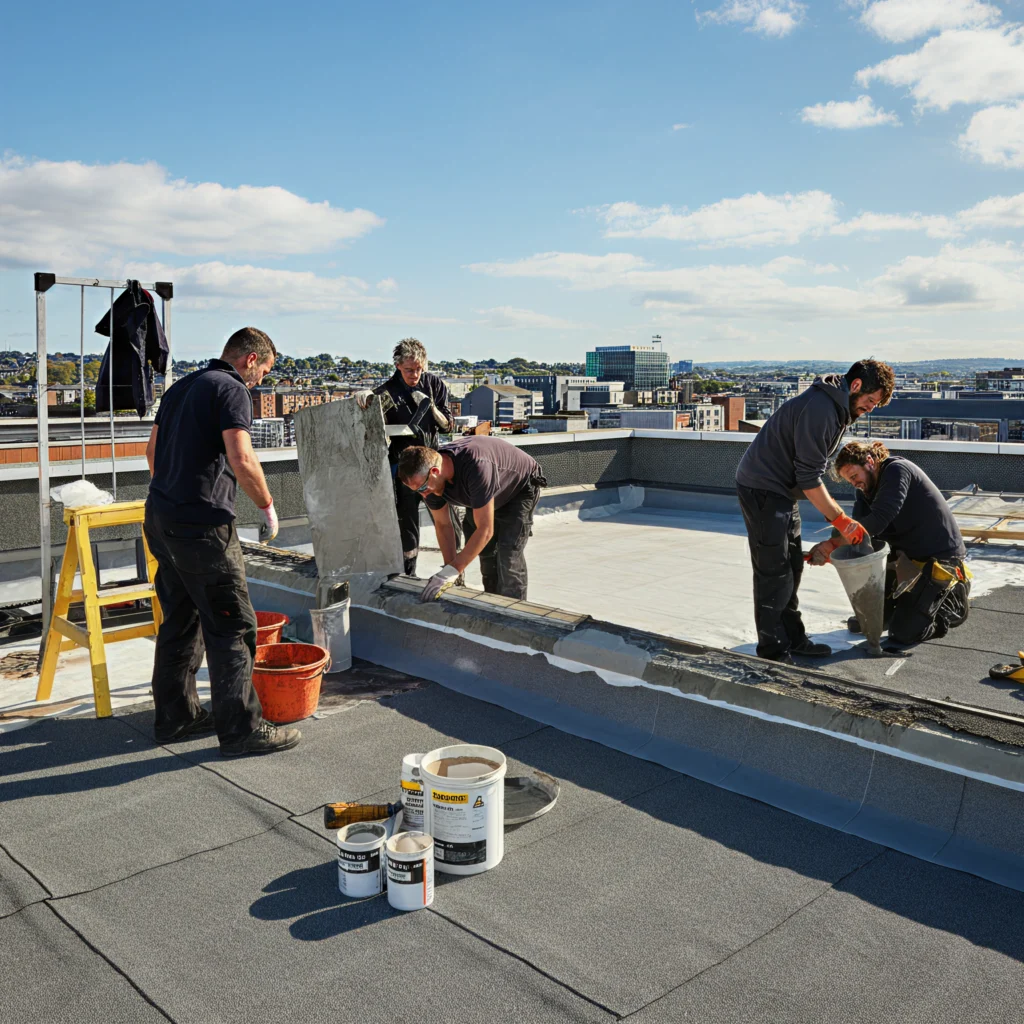A leaking concrete roof can pose significant risks to your home or property. Ignoring even small leaks can lead to water damage, mold growth, weakened structures, and costly repairs down the line. Thankfully, addressing roof leaks promptly can mitigate these risks and help you maintain the integrity of your building.
Whether you’re a homeowner, DIY enthusiast, or contractor, this guide will teach you how to identify and repair concrete roof leaks efficiently, as well as how to prevent them in the future.

Identifying Leaks in Your Concrete Roof
Early detection is crucial in tackling roof leaks. Below are common signs that your concrete roof may need attention:
Water Stains or Damp Spots
One of the earliest signs of a roof leak is water stains. Check your ceiling for damp patches or discoloration. Persistent leaks may also cause bubbling or peeling paint.
Visible Cracks or Holes
Inspect the surface of the roof for visible cracks, holes, or any unusual wear and tear. Minor cracks may seem harmless at first but can grow into larger issues over time.
Mold or Mildew Growth
A leak left untreated can provide the perfect environment for mold or mildew to flourish. Be on the lookout for musty odors and visible growth around the ceiling or walls.
Dripping Water
For more severe leaks, you might notice water dripping or pooling inside during rain showers. Immediate action is needed in such cases to prevent extensive damage.
How to Inspect Your Roof Thoroughly
- External Inspection: Use a ladder (ensure safety precautions) to check for cracks, damaged sealants, or problem areas around roof joints and flashings.
- Internal Inspection: Look inside your attic or ceiling for wet insulation, water damage, or any signs of mold.
- Test with Water: Carefully pour water over suspected areas of the roof while someone inside checks for leaks.
Preparing for the Repair
Once you’ve identified the problem areas, it’s time to gather the necessary tools and materials. Here’s what you’ll need for concrete roof repair:
Tools and Materials
- Safety equipment (gloves, goggles, helmet, and non-slip footwear)
- Pressure washer or stiff brush for cleaning
- Crack filler (cement-based or epoxy-based patching compounds)
- Roof sealant or waterproof membrane
- Putty knife or trowel
- Roof primer (optional, for better sealant adhesion)
- Waterproof tape (for emergency roof repair)
- Sandpaper or grinder (to smooth the surface before repair)
- Paintbrush or roller (for sealant application)
Safety First
Always prioritize safety during repairs. Avoid climbing on the roof during bad weather and use a secure ladder. If the damage is extensive or the area is hard to access, it may be wise to call professional roof repair services like ifixroofingandchimney in Dublin, Ireland.
Repairing Cracks in Your Concrete Roof
Cracks are one of the most common issues with concrete roofs, especially flat roofs. Here’s how to repair them step-by-step:
Step 1: Clean the Area
- Use a pressure washer or stiff brush to clean the affected area. Remove debris, dirt, or loose material to ensure the patch adheres properly.
- Allow the surface to dry.
Step 2: Prepare the Crack
- Use sandpaper or a grinder to smooth the edges of the crack.
- For larger cracks, widen them slightly with a chisel to create a clean channel for the filling compound.
Step 3: Apply the Patching Compound
- Mix the patching compound as per the manufacturer’s instructions.
- Use a trowel or putty knife to fill the crack completely, ensuring there are no air pockets.
- Smooth the surface and allow it to cure as directed (usually 24–48 hours).
Step 4: Seal the Repaired Area
- Once cured, apply a roof sealant over the patch for added waterproofing.
Sealing Joints and Flashings
Joints, flashings, and roof penetrations like chimneys and vents are common weak points where leaks occur. Here’s how to properly seal them to prevent water infiltration.
Clean the Area –Remove old caulking, dirt, and debris for a fresh sealing surface.
Apply Roof Sealant – Use a strong roof sealant or waterproof tape to seal gaps, edges, and flashing around chimneys, vents, and joints.
Use a Brush or Roller – Spread the sealant evenly to ensure complete coverage and allow it to cure as per manufacturer instructions.
Preventive Measures for Long-Term Roof Maintenance
Regular maintenance is key to ensuring your concrete roof remains leak-free for years to come. Below are some tips to keep it in top condition.
Conduct Regular Inspections
Schedule bi-annual roof inspections, especially before and after heavy rainy seasons. Keep an eye out for new cracks or signs of weather damage.
Clean Your Roof Periodically
Debris like leaves, dirt, and moss can trap moisture and lead to roof leaks. Clean your roof regularly with a broom or hose to prevent buildup.
Reseal Every Few Years
The protective coatings on concrete roofs degrade over time. Reseal your roof every 3–5 years with a high-quality roof sealant to maintain its waterproofing abilities.
Act Quickly on Small Cracks
Don’t ignore small cracks or damp spots. Quick repairs help prevent large-scale water damage and reduce the cost of emergency roof repairs.
Hire a Professional for Complex Repairs
While DIY roof repairs can be effective, larger issues like structural damage or widespread leaks require professional expertise. If you’re in Dublin, Ireland, consider ifixroofingandchimney, where we specialize in roof leak repair, concrete roof repair, and roof waterproofing.
Take Action to Protect Your Roof and Property
Repairing a leaking concrete roof is crucial to prevent costly damage and maintain the structural integrity of your home or property. By identifying leaks early, using the right tools and techniques, and adopting regular maintenance practices, you can extend the lifespan of your roof and keep your space safe and dry.
If you’re looking for a reliable partner in roof maintenance or roof replacement in Dublin, get in touch with ifixroofingandchimney today. Our skilled team offers expert services in roof patching, roof sealing, and emergency roof repair, ensuring your roof stays leak-free through every season.

